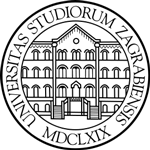Neural Network for Papaya Leaf Disease Detection
Abstract
The scientific name of papaya is Carica papaya which is an herbaceous perennial in the family Caricaceae grown for its edible fruit. The papaya plant is tree-like,usually unbranched and has hollow stems and petioles.Its origin is Costa rica,Mexico,USA.The common names of papaya is pawpaw and tree melon.In East Indies and Southern Asia,it is known as tapaya,kepaya,lapaya and kapaya.In Brazil,it is known as Mamao. Papayas are a soft, fleshy fruit that can be used in a wide variety of culinary ways. The possible health benefits of consuming papaya include a reduced risk of heart disease, diabetes, cancer, aiding in digestion, improving blood glucose control in people with diabetes, lowering blood pressure, and improving wound healing.
Disease identification in early stage can increase crop productivity and hence lead to economical growth.This work deals with leaf rather than fruit.Images of papaya leaf samples,image compression and image filtering and several image generation techniques are used to obtain several trained data image sets and then hence providing a better product. This paper focus on the power of neural network for detecting diseases in the papaya.Image segmentation is done with the help of k-medoid clustering algorithm which is a partitioning based clustering method.

This work is licensed under a Creative Commons Attribution-NonCommercial-NoDerivatives 4.0 International License.






